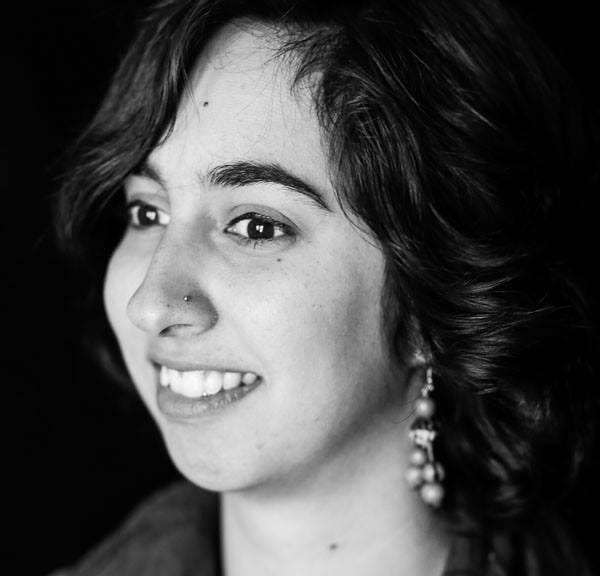The Storms We Wield: The human superpower to change the weather
Her eyes turn white. Winds pick up. Lightning engulfs the sky.
Marvel's Storm is brewing; you'd better hope she's fighting for you.
Storm's abilities to control the weather are among the most impressive and versatile powers in the comic universe. By manipulating thermal, electric, and kinetic energy, she can create phenomena ranging from intense, concentrated lightning to massive, spiraling tornadoes.
Human activities also…create profound effects on weather patterns across the globe. The problem is, we’re really bad at it.
While the rest of us don't have nearly her level of precision, human activities also alter the amount of heat and moisture in the air– creating profound effects on weather patterns across the globe. The problem is, we're really bad at it. Which means our “powers†can get us into serious trouble.
Deforestation
Before factories, before highways, before greenhouse gases– humans have been cutting down trees. We do this to make the room for farms and pastures, and to clear land for our own homes. When we clear a forest, however, we also change the weather.
Ignore the bark and the branches, and a tree is really a huge leafy straw, sucking water from the ground to the air. Water gets pulled up to the leaves, where it is used to fix energy (photosynthesis), and then released through pores into the air. This is called transpiration, aka tree sweat (try it at home). One oak tree can transpire 40,000 gallons of water a year– multiply that into a forest, and you've released more than enough water vapor to form rain clouds.
Expanses of tropical forests reinforce a cycle of warm, wet air and forest growth that keeps the tropics green and rainy. Deforestation breaks that cycle of moisture, since croplands don't transpire nearly as much as forests (and developed land even less). Climate models point out that losing large tracts of forest land reduces regional rainfall. In addition, major rainfall patterns across the globe depend on moist air traveling from the tropics. The loss of large tropical forests in particular can induce global shifts in monsoon seasons.
Urban Heat Islands
You're not imagining it– cities are just plain sweaty. Air temperatures in cities are demonstrably hotter than in comparable rural areas. That bead of sweat rolling down your back as you cross a parking lot is likely due to the Urban Heat Island (UHI). The urban heat island doesn't just crank the heat up, though– it also makes it last longer. When the sun goes down in rural areas, temperatures drop rapidly. In urban areas, however, the daytime heat sticks around.
By feeding precise temperature measurements into computer models, researchers can pinpoint exactly which aspects of the urban landscape contribute to UHI. Materials like concrete and asphalt absorb and store heat during the day, then slowly release it at night– unlike surfaces like grass, which just reflect it. Although you can easily feel this effect on your bare feet, it's not necessarily the most important factor. Cities are also affected by the deforestation effects mentioned above– just a bit of sparse tree cover can help cool the air with water vapor and shade.

Even the geometry of a dense city center factors in. A rural landscape is relatively flat, with a full view of the sky. In dense urban areas, tall buildings create “canyons†that block exposure to the sky. Instead of freely escaping to the atmosphere at night, thermal radiation instead bounces between the building “canyon†surfaces, remaining trapped in the urban air.
This means people need more A/C in the summer and less heating in the winter, especially at night. There's less frost, and snow melts more quickly. When combined with rising temperature extremes worldwide, urban heat island effects can exacerbate dangerous heat waves— making them potentially deadly.
Cloud Seeding
Marvel's Storm makes rain by expertly manipulating humidity, temperature, and pressure. People make rain by spewing tiny particles into the air.
At first, this was completely accidental. In the 1970s, people noticed that more rainclouds formed downwind of industrial plants.This wasn't just fluffy pollution, however. The factory smoke was actually kickstarting the condensation part of the water cycle.
The grade school version of the water cycle seems pretty simple: evaporation (water vapor), condensation (clouds), and precipitation (rain). There's a crucial ingredient needed to go from evaporation to condensation, however: cloud seeds. Water vapor needs to attach to a hard surface so it can transform from gas to liquid. We call these tiny particles cloud seeds– or cloud condensation nuclei– because they are the starting point around which raindrops grow.
Many particles act as cloud seeds: sea salt, dust, clay. Industrial smoke contains soot particles that are excellent cloud seeds. Factories also pump out heat and moisture, making conditions ripe for cloud formation.
Even before factory-induced clouds made the news, researchers (notably, Kurt Vonnegut's brother) had been searching for a way to enhance precipitation. Once the process was perfected in the 1990s, people immediately began artificially seeding existing clouds to encourage more rain and snow.
Instead of dust or factory smoke, we shoot flares of silver iodide or release dry ice from planes. Each of these contain particles that mimic ice crystals, another naturally-occurring cloud seed. Artificial cloud seeding has been used to promote rainfall in arid regions, clear fog from airports, and prevent hail damage. The US government even tried to see if cloud seeding could manipulate hurricanes, in the Marvel-ously named project STORMFURY. China boasts one of the largest cloud seeding programs; in one instance, they claim to have ended a drought by inducing a 3-day snowstorm that closed 12 major roads around Beijing.
Although our human ability to manipulate temperature, moisture, and global weather patterns may seem trivial compared to Storm's impressive displays, our impacts are real and lasting. Right now, human society has some of Storms' power, but none of her control or precision, which puts us in a dangerous spot. As we begin to understand the extent of our climatic impact, we can try to reduce our effects (such as techniques to reduce heat islands), and even harness some of it for good (through techniques like cloud seeding). Regardless, Storm's story has some caution for us. Even her powers are limited by the environment: bringing rain to one drought-stricken village caused somewhere else dried up in response. In order to wield her powers well, Storm needed to learn balance and control. As we learn more about the extent of our human powers, perhaps we can, too.
About the Author:
 |
Uma Nagendra is a PhD Candidate at the University of Georgia studying how tornadoes change the way trees interact with the soil. When she's not crawling over fallen trees in North Georgia, Uma enjoys aerial circus arts, playing the mandolin, and convincing other people to dance. She can be reached at uma.nagendra@gmail.com or followed on Twitter @atinytornado. More from Uma Nagendra. |
About the Author
- athenssciencecafehttps://athensscienceobserver.com/author/athenssciencecafe/April 17, 2020
- athenssciencecafehttps://athensscienceobserver.com/author/athenssciencecafe/April 12, 2020
- athenssciencecafehttps://athensscienceobserver.com/author/athenssciencecafe/April 3, 2020
- athenssciencecafehttps://athensscienceobserver.com/author/athenssciencecafe/March 30, 2020







